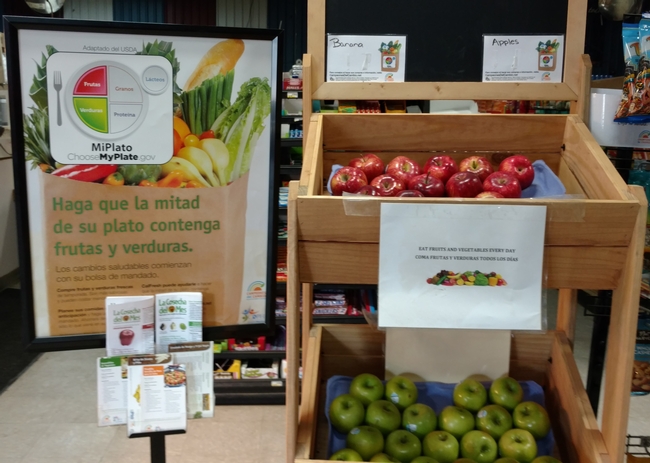SNAP-Ed practitioners adopt a practical, effective tool from UC ANR's NPI to evaluate program impact in schools, ECEs, after-school programs, and grocery stores, adding workforce capacity to public health agencies.
The Issue
In recent decades, increasing attention has been placed on improving access to healthy foods and opportunities to participate in physical activity in California communities with high rates of poverty and food insecurity. Schools and other places where children receive care are important partners in promoting wellness, as are the retail establishments where families purchase food. Supplemental Nutrition Assistance Program Education (SNAP-Ed) interventions partner with these community sites to promote healthy eating and physical activity.

How UC Delivers
UC ANR's Nutrition Policy Institute (NPI) has developed and tested Site-level Assessment Questionnaires (SLAQs) to empower local health departments (LHDs) and other agencies working with schools, early childhood education centers (ECE), out-of-school programs, and grocery stores to perform annual assessments of wellness practices at each site. A SLAQ is a setting-customized, easy-to-use questionnaire comprised of multiple sections, each of which addresses a specific wellness domain, such as the school food environment or prominence of healthy food displays in a grocery store. Topic experts, including extension and SNAP-Ed professionals, education professionals with nutrition expertise, and academic researchers,reviewed SLAQs and provided valuable contributions regarding their questionnaire validity and content. The SLAQs were then pilot-tested in the field for feasibility, validity, and reliability.
Extension programs can partner with schools, ECEs, out-of-school programs, and grocery stores to use completed SLAQs to identify areas of need and create action plans for improvement. As sites perform annual reassessments, they receive concrete data that reflect the progress of their programs. SLAQ scores from multiple sites can be aggregated to measure the degree of health promotion in a community, a county, or across the state. Extension programs can also examine how improving health-promoting practices over time relates to changes in health outcomes.
The Impact
IIn the first year, SLAQs were implemented across 46 California counties receiving SNAP-Ed funding, including 161 schools, 144 ECE sites, 68 out-of-school programs and 87 grocery stores. Additionally, SLAQs were adopted for use by five California LHDs who received CDC SPAN funding and SNAP-Ed funded elementary schools in Washington.
Local SNAP-Ed implementing agencies are already working with sites to tailor interventions based on the individual site's areas of strengths and opportunities. SLAQ users appreciate having a standardized tool to gather data, pinpoint weaker areas of performance, and strengthen their efforts to improve the health of California's children. NPI's role in expanding science-based evaluation practices demonstrates UC ANR's commitment to promoting healthy people and communities. Maridet Ibanez, Project Director for Orange County Health Care Agency's CalFresh Healthy Living program, highlighted how SLAQs helped them create a “menu” of intervention options that they were ready and willing to collaborate with their sites to implement:
We were able to compare 10 different [ECE] sites. It was a uniform tool that we could use to assess our sites. This wouldn't have been possible without the SLAQs. - Maridet Ibanez, Project Director